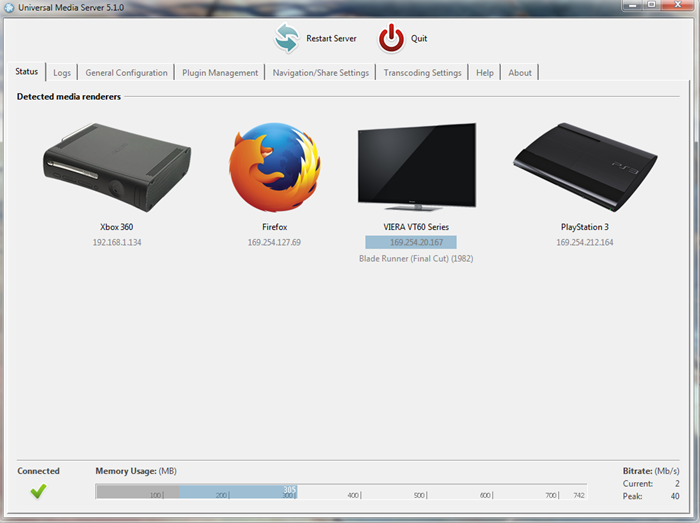

Plex chooses to direct stream a file to a client when the client doesn't natively support the container of the media file, but both the video and audio formats are supported. The next best thing to direct playing a media file is to direct stream it. Since Plex only sends the media file to the client as-is, this method uses almost no CPU on the server. When Plex chooses to direct play a file, that means the media file is 100% compatible with the client device, and the Plex server needs to do nothing with the media file except send it to the client device. This is the ultimate way you want your Plex Media Server to handle a media file it is streaming to a client device. There are three ways Plex will handle streaming media to a client device. Knowing what your client devices will support is key to ensuring you get the best experience out of Plex. A client may also only be able to process a video that is below a specific bitrate - usually measured in megabits per second (Mbps). Understanding how your video file is encoded - which video and audio formats are used - will make managing your Plex server much easier.Įach client that you use to play a file can play specific formats of videos and audio codecs. Some subtitles may even be burned into the video to avoid having to add the subtitles later.Įach video file that you add to Plex will include the above parts in the video container. These can include subtitles of real languages or languages used in fantasy movies. The last part of a video container is the subtitles. Some containers, such as MKV, can support multiple audio streams, and each stream can be encoded using a different codec. Popular, and widely supported codecs in use today are AAC and AC-3. Similar to the video stream, audio streams are also encoded using various codecs.
#Disable subtitles universal media server 1080p
The H.265 codec is a newer codec used for 4K videos, but many 1080p videos are also starting to be encoded with H.265 because of the smaller file size. There are many different codes in use, but the most popular and widely supported is the H.264 codec. Each video stream is encoded using a specific video codec. Depending on the container, it can hold multiple audio streams, such as one for stereo and one for surround sound. A container holds the video and audio stream, and any included subtitles.

All video files are comprised of four main parts: 1. Let's look at how a media file (I am mainly talking about video files) is comprised and how Plex would deal with specific files when streaming to a client.Įach video file that is stored on your hard drive is not just a simple file with the video and audio joined together. If you do rip your Blu-ray movies to play on Plex, understanding your media files becomes even more important. Understanding which media files won't play, and why they won't play on a particular client is important when managing a Plex server.

When it comes to video files, there are certain aspects of how a media file is encoded that could impact how Plex sends the file to a client.Įvery client that is supported by Plex may not be able to natively play a particular media file without some help from the Plex server. Your Plex Media Server can play pretty much any media file format you can add to it, except for image formats. With Plex, understanding the difference between direct play, direct stream, and transcoding can make all the difference to the enjoyment of the movies that are streamed from your Plex server.


 0 kommentar(er)
0 kommentar(er)
